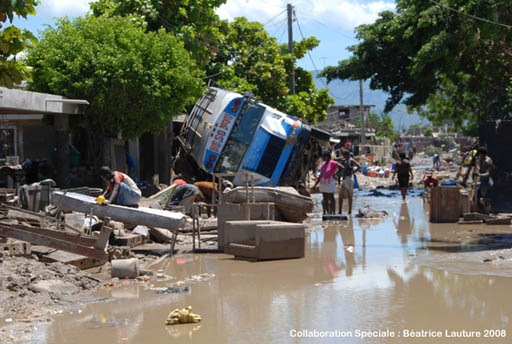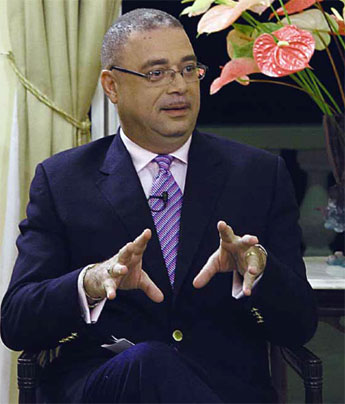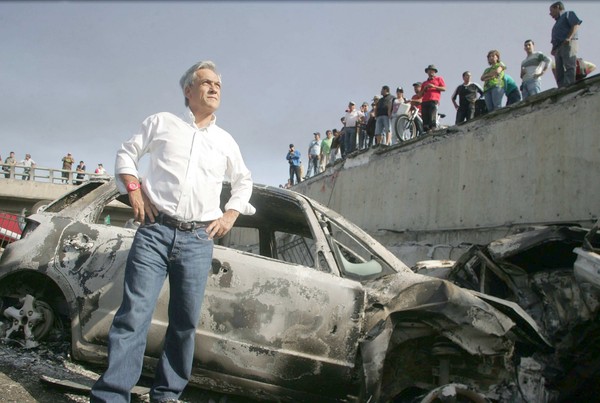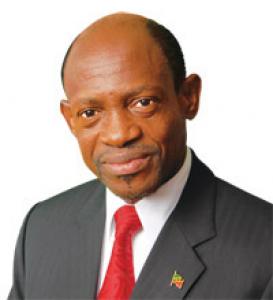 The massive earthquakes in Haiti and Chile within six weeks of each other, on January12 and February 27 respectively, revealed the limited capacity of Caribbean Community (CARICOM) countries to respond to disasters on this scale.
The massive earthquakes in Haiti and Chile within six weeks of each other, on January12 and February 27 respectively, revealed the limited capacity of Caribbean Community (CARICOM) countries to respond to disasters on this scale.
To date, CARICOM countries have not been able to mobilize support for Chile and have virtually left the problem to be tackled by the Chilean government, the United States of America, better-off Latin American nations and the international institutions. CARICOM countries simply do not have the resources in any form to cope with massive disasters within their own member states, let alone to provide help to other countries.
In this regard, CARICOM countries need to thank God that the 7.0 earthquake that buckled Haiti did not extend into Jamaica.
Nonetheless, high praise should be given to CARICOM countries for their efforts, at both the level of governments and the public, to help Haiti. In proportion to their capacity, many of them have been very generous.
Barbados has now emerged as the country which, on a per capita basis, has pledged the most to Haiti’s relief and reconstruction. Prime Minister David Thompson has revealed that the Barbados government is donating US$1 million to Haiti, the same figure as the governments of the two countries at either end of CARICOM’s economic scale - oil-rich Trinidad and Tobago, and Guyana, the poorest country, in per capita income terms, after Haiti in the region.
 Barbados Prime Minister David Thompson
Barbados Prime Minister David ThompsonWhile Guyana’s contribution was exemplary, the donation of Barbados is outstanding for not only has the government pledged US$1 million, but it has been shouldering the costs for the operations of the Regional Security System (RSS) that has provided much needed security and other services to Haiti. Barbados shares the RSS with six island-territories of the Organization of Eastern Caribbean States (OECS) but Thompson revealed that “no other contributions have been forthcoming” from other states.
CARICOM countries gave as much as they could. They did so directly and through the Caribbean Disaster Emergency Management Agency (CDEMA). But, at the end of the day, large though the contribution was in relation to the means of these countries, it was a drop in the Ocean measured against the scale of Haiti’s needs. Haiti required the large scale assistance of countries such as the United States, Canada, France, Brazil and the international institutions like the Inter-American Development Bank (IDB).
In early March at a meeting of CARICOM finance ministers, Secretary-General, Edwin Carrington, declared that the region “cannot fail to take cognizance of the near similar situation (to Haiti) which has befallen Chile.” He urged assistance ‘to the best of our ability at this time”.
The number of dead and injured in Chile was not as great as in Haiti even though the 8.8 tremor was much stronger than the earthquake that bowed Haiti. Nonetheless, as this commentary is being written, the United Nations Office for the coordination of Humanitarian Affairs, reports that 723 people were killed and 2 million (about 10 per cent of the population) have been made homeless and are walking the streets. Six regions were declared as zones of catastrophe.
But CARICOM countries are already over-stretched in Haiti. It is doubtful that any of them, except perhaps for Trinidad and Tobago, could make anything more than a token gesture of assistance to Chile.
 Chile's President-elect Sebastian Pinero surveying destruction
Chile's President-elect Sebastian Pinero surveying destructionFortunately, there are other governments that can provide immediate relief assistance and Chile has the financial capacity to undertake the reconstruction that has been estimate, so far, at US$30 billion - 15 per cent of Chile's annual economic output. The country is the best managed in Latin America with a public debt of only 6 per cent of its GDP. By comparison, the majority of CARICOM countries have a debt to GDP ratio of one hundred per cent and more.
Further, over the last decade Chile saved much of the profits from sales of copper by state-owned mines and taxes on private miners. Its sovereign wealth funds now hold about US$15 billion. With this kind of record and assets, Chile will easily be able to access capital markets at low interest rates for rebuilding.
How to establish machinery for avoiding huge human and infrastructural catastrophes as a result of natural disasters is something that should now be actively exercising the minds of Caribbean leaders.
St Kitts-Nevis Prime Minister Denzil Douglas recently observed that “there is a wave of volcanic activity that is taking place in this region” and he called on his country’s National Emergency Management Agency “to review the country’s capacity to deal with an earthquake”. He would know that to do so the Agency would require greater resources from the government than it now has.
 St Kitts-Nevis Prime Minister Denzil Douglas
St Kitts-Nevis Prime Minister Denzil Douglas
Among the factors that all governments should take into account is the legislation and enforcement of far better building standards than now exists. Equally, they should all subscribe to the Caribbean Catastrophe Facility Risk Insurance Facility which paid out very quickly to Haiti and gave the government some resources to help rebuild the broken country.
The underlying point about all this is that CARICOM countries could not cope with two disasters simultaneously among its own membership, and while they have been valiant in Haiti in relation to their means, their financial contribution to Haiti was miniscule. Nonetheless, disaster threatens them in the form of hurricanes and earthquakes and they are ill-prepared to cope – a fact that international financial institutions and large countries should take into account by ceasing to graduate them from concessionary lending; urgently addressing their burdensome commercial debt problems; and stopping the demand in the World Trade Organisation and in trade agreements that they give reciprocal treatment to countries and regions much larger than they are.
Of course, the principal lesson to be learned from the experience of Haiti and Chile is that the countries that will recover faster and reconstruct quicker from disasters are the ones with the prudently run economies that benefit from greater resources. In this connection, CARICOM countries could make their economies stronger by accelerating the completion of the Caribbean Single Market and Economy with an effective governance structure.
Praying that disaster does not kick down the doors of two or more CARICOM countries at the same time won’t be enough.